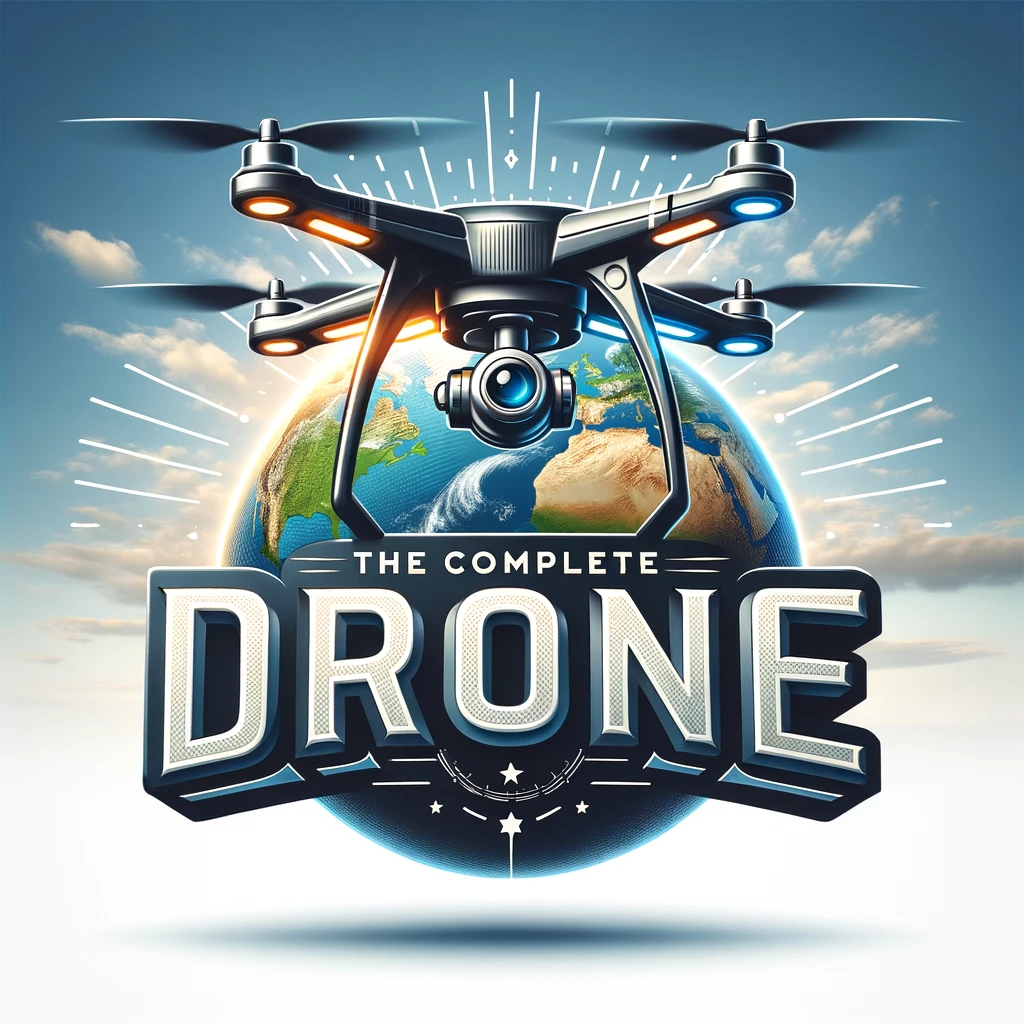So you’ve just purchased a brand new drone and are eager to take it for a spin, but before you can soar through the skies with ease, there’s one crucial step you shouldn’t overlook – calibration. Whether you’re a seasoned drone enthusiast or a newbie, understanding how to calibrate your drone is essential for achieving stable flight and capturing flawless footage. In this article, we will walk you through the step-by-step process of calibrating your drone, ensuring that you’re ready to take to the skies with confidence and precision. Let’s get started!
Why is Calibrating a Drone Important?
Calibrating a drone is essential for several reasons. By ensuring accurate flight control, optimizing stability and performance, and preventing drifting and inaccurate GPS data, calibration plays a crucial role in maintaining the overall functionality and safety of the drone.
Ensuring Accurate Flight Control
Calibrating a drone is vital to ensure accurate flight control. When a drone is properly calibrated, it responds promptly and accurately to the pilot’s commands, allowing for a smoother and more controlled flight experience. Without calibration, the drone may exhibit erratic behavior, leading to difficulty in maneuvering and potential accidents.
Optimizing Stability and Performance
Another significant benefit of calibrating a drone is the optimization of stability and performance. By calibrating the various components of the drone, such as the inertial measurement unit (IMU), compass, electronic speed controllers (ESCs), and remote controller, the drone can operate at its full potential. This optimization results in improved stability during flight and better overall performance, including enhanced responsiveness, increased maneuverability, and reduced vibrations.
Preventing Drifting and Inaccurate GPS Data
Drifting and inaccurate GPS data can greatly impact the drone’s flight capabilities and its ability to maintain a steady position in the air. Through calibration, especially of the compass and GPS system, the drone can accurately determine its location and avoid drifting. This is particularly crucial for tasks that require precise positioning, such as aerial photography, mapping, or search and rescue operations. Calibration prevents drift and ensures that the drone receives accurate GPS data, enabling it to perform tasks with precision and reliability.
Understanding Drone Calibration
To effectively calibrate a drone, it is essential to understand the different types of calibration, know when calibration is necessary, and prepare adequately before beginning the calibration process.
Types of Calibration
Drone calibration typically involves four main types: IMU calibration, compass calibration, ESC calibration, and remote controller calibration. Each type focuses on a specific component and is essential for maintaining optimal performance and accuracy.
When to Calibrate a Drone
Calibrating a drone should be done under various circumstances. It is crucial to calibrate the drone when you first purchase it, as manufacturers often recommend this step. Additionally, calibration is necessary whenever you notice abnormal behavior in flight performance, such as drifting or erratic movements. Furthermore, if you have updated the drone’s firmware or made significant changes to its hardware, calibration may be required.
Preparation Before Calibration
Before initiating the calibration process, certain preparations are necessary. Ensure that the drone’s battery is fully charged to prevent any interruptions during calibration. Find a safe and open area to perform the calibration where the drone has sufficient satellite signal reception. It is also essential to remove any metal objects or magnetic interference nearby, as this can affect calibration accuracy.

This image is property of images.pexels.com.
Calibrating the IMU (Inertial Measurement Unit)
The IMU, or Inertial Measurement Unit, is responsible for collecting data regarding the drone’s movement, acceleration, and orientation. Calibrating the IMU is crucial for accurate flight control and stability.
Powering on the Drone
Begin by turning on the drone and allowing it to complete its startup process. Ensure that the drone is on a level surface during this step.
Accessing the Calibration Menu
Using the drone’s controller or mobile app, access the calibration menu or settings. Depending on the drone model and software, the calibration options may be located in different places within the menu.
Calibrating the IMU
Follow the step-by-step instructions provided by the drone’s manufacturer to calibrate the IMU. This typically involves rotating and positioning the drone in specific orientations to allow the IMU to gather accurate data. The calibration process may vary between drone models, so it is crucial to consult the manufacturer’s guidelines for precise instructions.
Calibrating the Compass
Calibrating the compass is essential for accurate heading and navigation. It ensures that the drone accurately determines its direction and maintains a steady flight path.
Importance of Compass Calibration
The compass plays a vital role in determining the drone’s orientation and its ability to hold its heading. If the compass is not calibrated correctly, it can result in inaccurate flight patterns, erratic behavior, and drift. Compass calibration is particularly crucial in areas with electromagnetic interference, such as near power lines or large metal structures.
Powering on the Drone
Turn on the drone and place it on a level surface, ensuring that the landing gear is not obstructing the compass.
Accessing the Compass Calibration Menu
Using the drone’s controller or mobile app, access the compass calibration menu or settings. Consult the drone’s manual or online resources to locate this option accurately.
Calibrating the Compass
While following the instructions provided by the drone’s manufacturer, rotate the drone in a specific pattern or perform an “onboard dance,” as some models require. This motion allows the drone’s compass to gather accurate data about its surroundings and calibrate itself accordingly.

Calibrating the ESCs (Electronic Speed Controllers)
Calibrating the ESCs, or Electronic Speed Controllers, is essential for ensuring consistent and accurate motor control. Proper calibration prevents erratic motor behavior and enhances stability during flight.
Importance of ESC Calibration
The ESCs control the speed and power distribution to the drone’s motors. Calibration of the ESCs ensures that they are synchronized and operating at their optimal range. Calibration prevents potential issues such as motor cogging, where the motors hesitate or stutter during acceleration, resulting in an unstable flight.
Preparation Before Calibration
Before calibrating the ESCs, it is crucial to disconnect any propellers from the drone to ensure safety. Also, make sure that the remote controller is turned off to avoid any accidental inputs during the calibration process.
Accessing the ESC Calibration Menu
Using the drone’s controller or mobile app, access the ESC calibration menu or settings. The process may vary depending on the drone model and software, so it is essential to consult the manufacturer’s guidelines for accurate instructions.
Calibrating the ESCs
Following the manufacturer’s instructions precisely, power on the drone and activate the ESC calibration mode. This mode allows the ESCs to recognize the maximum and minimum throttle positions from the remote controller. Once the calibration is complete, power off the drone and disconnect the battery. Ensure that the ESCs retain the calibration settings when you power on the drone again.
Calibrating the Remote Controller
Calibrating the remote controller is essential for maintaining accurate control over the drone. Proper calibration ensures that the drone responds accurately to your inputs and follows your commands.
Importance of Remote Controller Calibration
The remote controller is the primary means of controlling the drone’s flight. Calibration ensures that the control sticks and other inputs are properly synchronized with the drone’s flight control system. A calibrated remote controller prevents input lag, inconsistent control, and enables precise maneuvering.
Powering on the Remote Controller
Turn on the remote controller and ensure that it is fully charged. Verify that the controller is connected to the drone via a stable and reliable signal.
Accessing the Calibration Menu
Using the remote controller’s menu or settings, navigate to the calibration options. Consult the remote controller’s manual for accurate instructions on accessing the calibration menu.
Calibrating the Remote Controller
Follow the step-by-step instructions provided by the remote controller’s manufacturer to calibrate the controller. This typically involves moving the various control sticks and switches through their full range of motion to ensure accurate input registration. Once the calibration process is complete, power off the remote controller and power it back on to apply the settings.

This image is property of images.pexels.com.
Calibrating Other Sensors
Apart from the core components mentioned above, other sensors in the drone may also require calibration, depending on the model and features.
Calibrating the Barometer
The barometer sensor helps measure the drone’s altitude. Calibration of the barometer ensures accurate altitude readings and helps maintain stable flight in different weather conditions. The calibration process for the barometer may involve software adjustments or manual calibration, depending on the drone’s capabilities.
Calibrating the Vision Sensors (If Applicable)
Drones equipped with vision sensors, such as obstacle avoidance or follow-me capabilities, may require sensor calibration. Vision sensor calibration ensures accurate distance and obstacle detection, contributing to a safer and more reliable flight experience. Follow the specific calibration instructions provided by the drone’s manufacturer for the vision sensors.
Performing a Test Flight
After calibration, it is crucial to perform a test flight to ensure that the drone is functioning correctly and that the calibration process has effectively improved its performance.
Safety Precautions
Before taking off, ensure that you are in a safe and open area away from people, buildings, and other obstacles. Verify that the battery is adequately charged, and the drone’s firmware is up to date. Double-check all the calibration settings to ensure they are applied correctly.
Taking Off and Flying
Begin the test flight by gently taking off and observing the drone’s behavior. Pay attention to its stability, responsiveness, and overall flight characteristics. Test different flight maneuvers, such as forward flight, turns, and altitude changes, to assess the drone’s performance.
Checking for Improvements
During the test flight, evaluate whether the calibration has resolved any previous issues or improved the flight experience. Assess the drone’s stability, accuracy in following commands, and overall flight performance. If the drone’s behavior has noticeably improved, it indicates a successful calibration process.

This image is property of images.pexels.com.
Troubleshooting Calibration Issues
Calibration issues may arise despite following the correct procedures. In such cases, troubleshooting is necessary to identify and rectify the problem.
Failed Calibration Attempts
If calibration fails, ensure that you have followed the correct calibration steps provided by the manufacturer. Double-check the environment for any potential interference, such as nearby metal objects or electromagnetic fields. If issues persist, consult the drone’s manual or contact the manufacturer’s customer support for further assistance.
Interference and Magnetic Field Issues
Interference and magnetic fields can adversely affect the calibration process and the accuracy of the drone’s sensors. Ensure that you calibrate the drone in an open area away from power lines, large metal structures, or other sources of electromagnetic interference. Additionally, avoid carrying magnetic objects that can interfere with the drone’s compass calibration.
Consulting the Manufacturer’s Guidelines
If you encounter persistent calibration issues or are unsure about any aspect of the calibration process, consult the manufacturer’s guidelines and documentation. Most manufacturers provide detailed instructions and troubleshooting steps specific to their drone models.
Conclusion
Regular calibration of a drone is of utmost importance for its optimal performance, accurate flight control, and safe operation. By ensuring accurate flight control, optimizing stability and performance, and preventing drifting and inaccurate GPS data, calibration serves as a crucial maintenance practice for drone pilots. With calibrated components such as the IMU, compass, ESCs, and remote controller, drones can achieve improved stability, responsiveness, and overall flight performance. By following proper calibration procedures, performing test flights, and troubleshooting any issues, drone pilots can enjoy a smooth and enjoyable flight experience while ensuring safety and preventing accidents.


